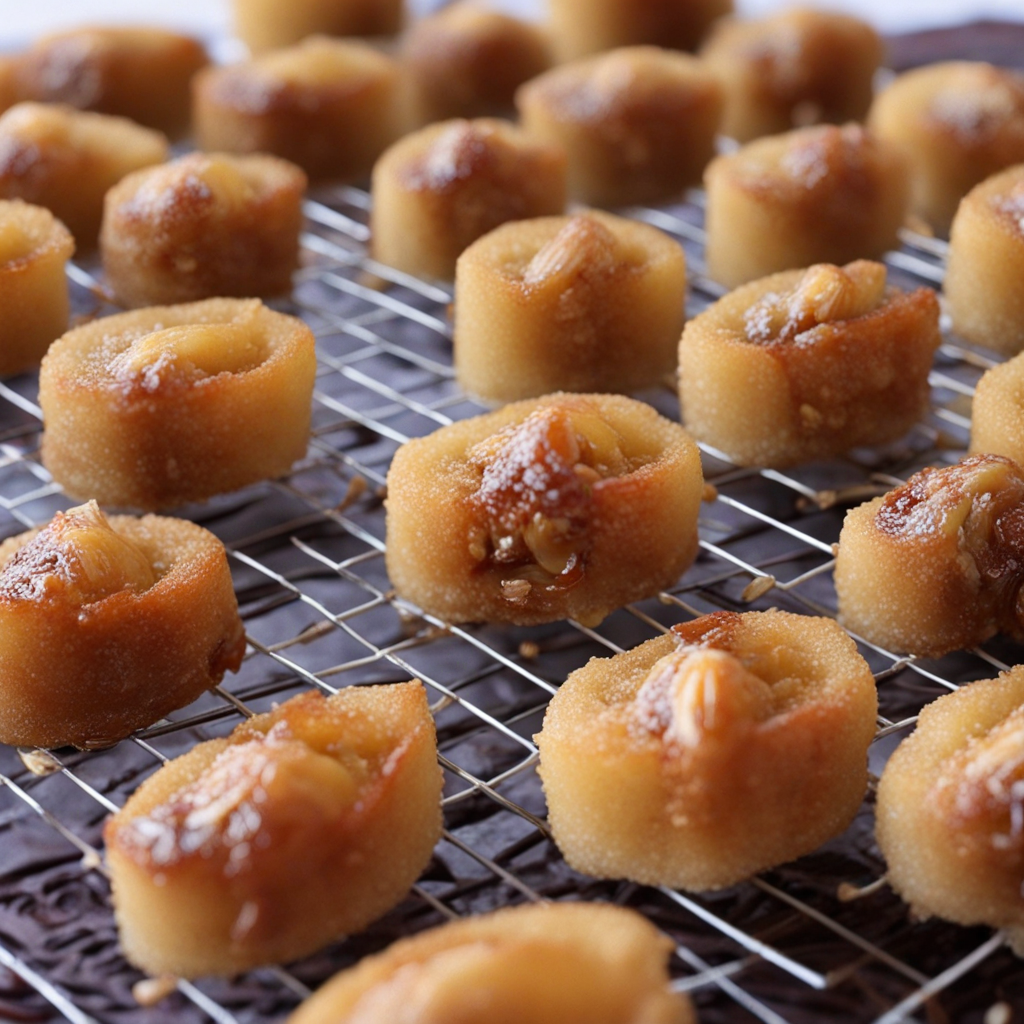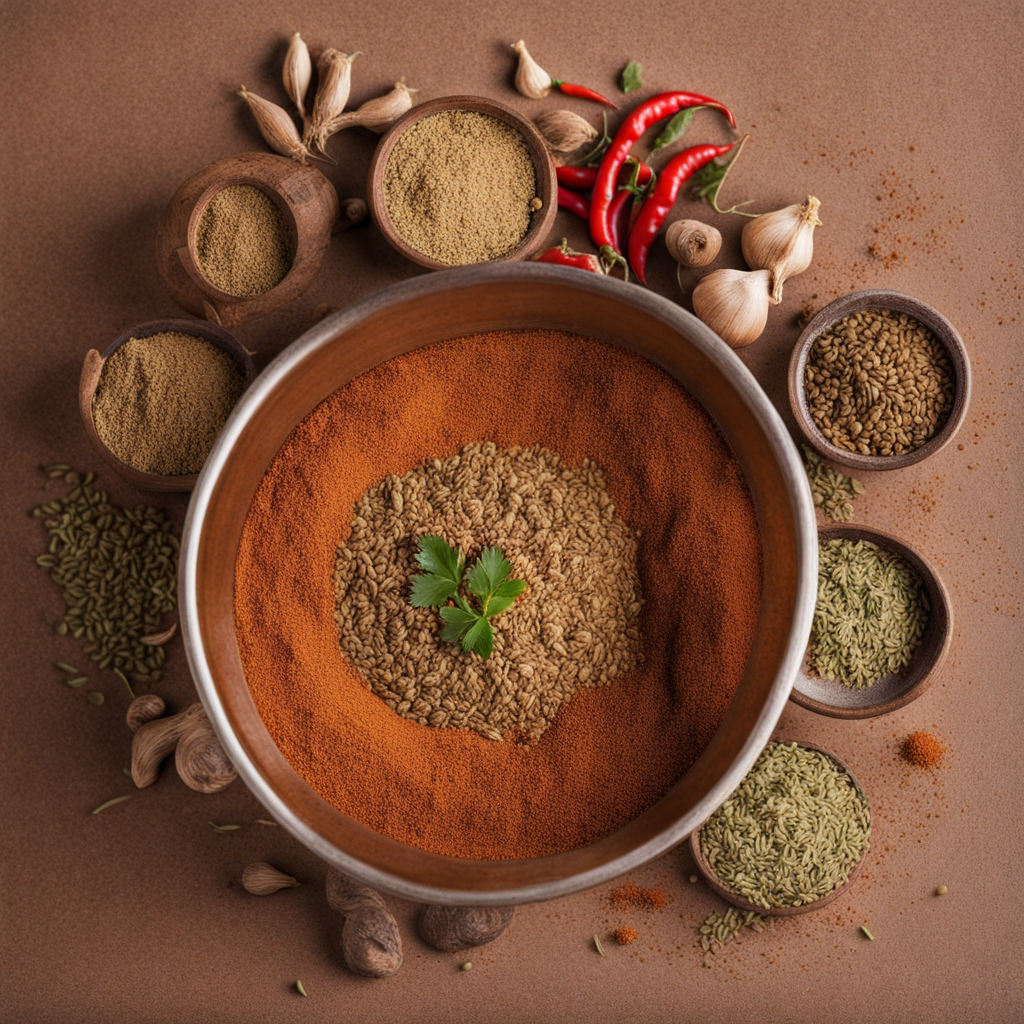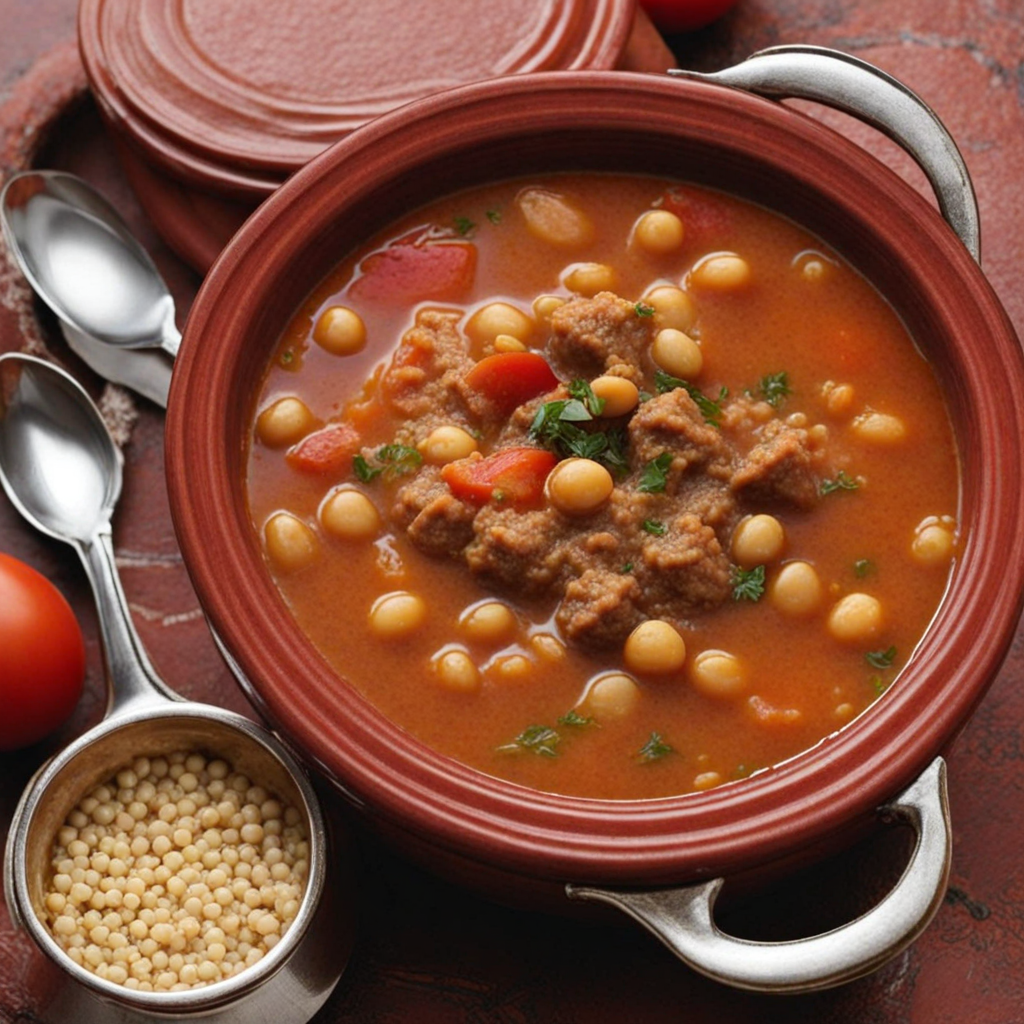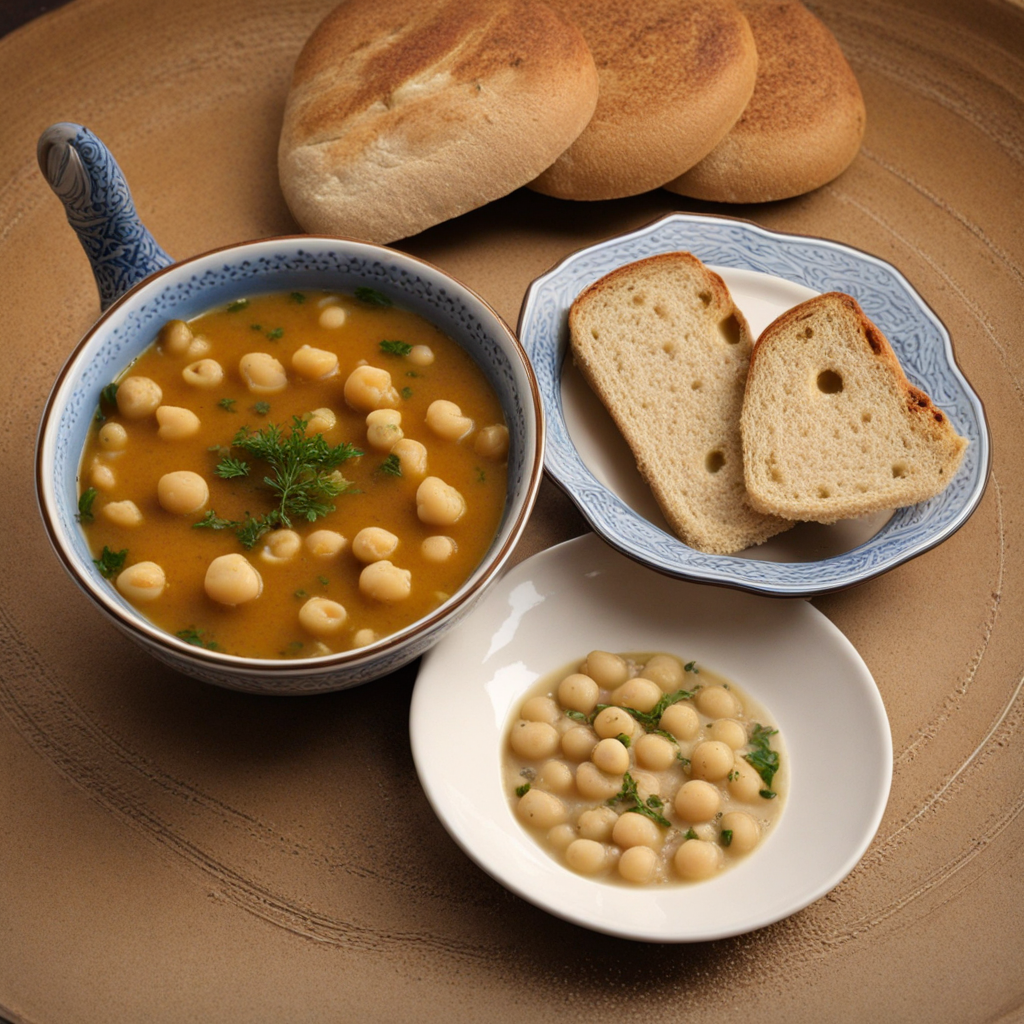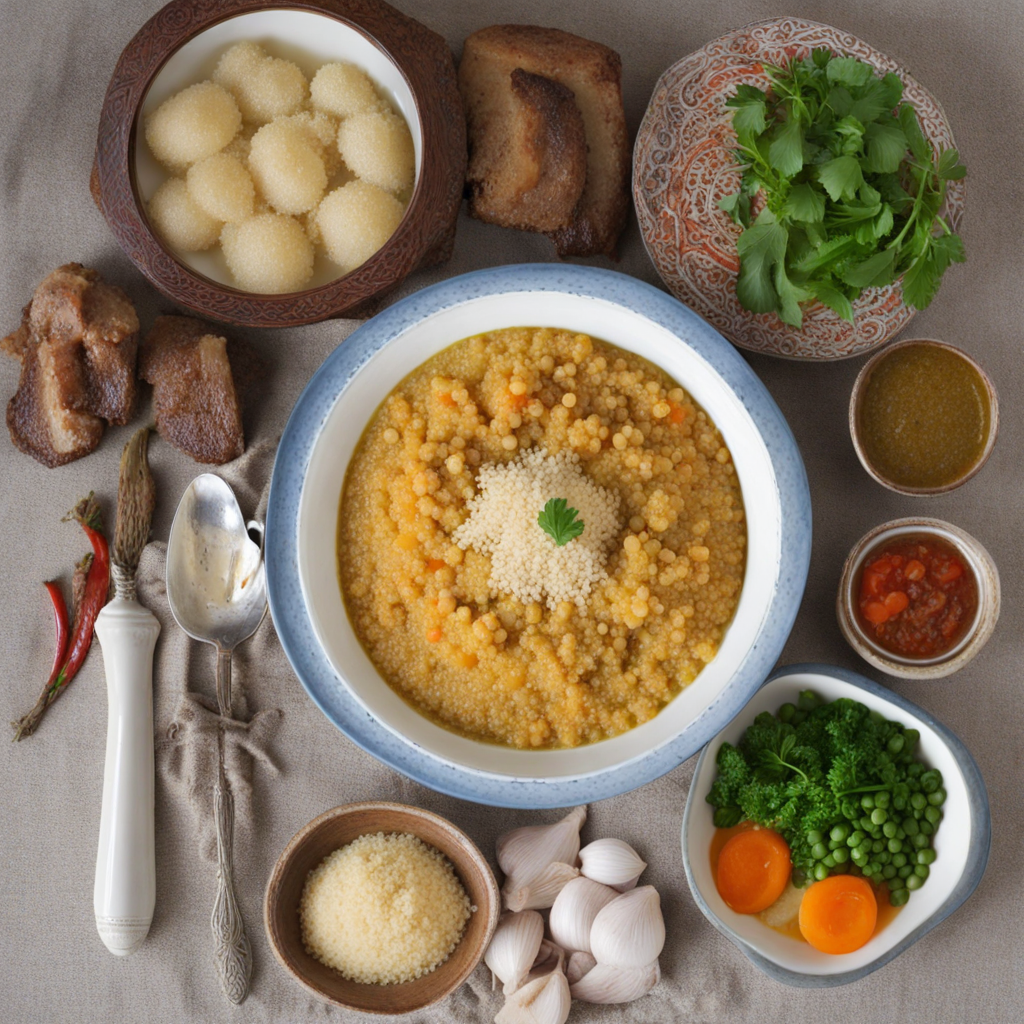Makroud
Makroud is a traditional Tunisian pastry that embodies the rich flavors and culinary heritage of North Africa. These delightful treats are made from a semolina dough that is often infused with spices, creating a wonderfully textured base. The dough is typically shaped into diamonds or squares and is filled with a sweet paste, usually made from dates or almonds, lending a natural sweetness and a hint of nuttiness to each bite. The combination of the crisp outer layer and the soft, sweet filling makes for a delightful contrast that is both satisfying and indulgent. After being shaped, Makroud is usually fried until golden brown, resulting in a crispy exterior that encases the luscious filling. Once fried, the pastries are often soaked in a fragrant syrup made from honey and orange blossom water, which adds a layer of aromatic sweetness that complements the flavors beautifully. Some variations might be dusted with powdered sugar or sprinkled with sesame seeds, enhancing both the visual appeal and the flavor profile. As you take a bite into a warm Makroud, you'll experience a burst of flavors that reflect the essence of Tunisian cuisine. The combination of semolina's subtle nuttiness, the natural sweetness of the date or almond filling, and the aromatic syrup creates a harmonious balance. Whether enjoyed as a dessert or a snack, Makroud is a delightful way to experience the culinary traditions of Tunisia, offering a taste that is both unique and memorable.
How It Became This Dish
The History of مقروض: A Sweet Symbol of Tunisian Culinary Heritage In the heart of North Africa, Tunisia is a land rich in history, culture, and flavors. Among its culinary treasures is مقروض (maqroud), a sweet pastry that encapsulates the spirit of Tunisian tradition. This delightful treat, made primarily of semolina and filled with dates or nuts, has evolved over centuries, reflecting the country’s diverse influences and the resilience of its people. Origins of مقروض The origins of maqroud can be traced back to ancient Tunisia, where the Berber people, the indigenous inhabitants of the region, cultivated crops and developed agricultural techniques that would lay the foundation for future culinary practices. The Berbers were known for their use of semolina, a coarser flour made from durum wheat, which became a staple in their diet. This ingredient would later become the cornerstone of maqroud. As Tunisia became a crossroads of civilizations due to its strategic location along the Mediterranean, its culinary landscape transformed. The Phoenicians, Romans, Arabs, and Ottomans all left their mark on Tunisian cuisine. It is believed that the introduction of almonds and other nuts by the Arabs, alongside the cultivation of date palms, contributed significantly to the development of maqroud. The word “maqroud” itself is derived from the Arabic verb “qarda,” which means “to pound” or “to crush.” This refers to the traditional method of preparing the pastry, where the dough is pounded to achieve the desired texture. The filling, often made of dates or nuts, is then encased within the semolina dough before being shaped and fried or baked. Cultural Significance Maqroud is more than just a delicacy; it holds a special place in Tunisian culture and social life. Traditionally, it is served during celebrations, family gatherings, and religious events. Its preparation often brings families together, embodying the communal spirit that is central to Tunisian society. The making of maqroud can be a labor-intensive process, but it is also a labor of love, often passed down through generations, preserving family recipes and techniques. In Tunisia, maqroud is often enjoyed with mint tea or coffee, making it a popular choice for hospitality. When guests arrive, offering them maqroud is seen as a gesture of goodwill and generosity. This practice underscores the importance of hospitality in Tunisian culture, where sharing food is a symbol of friendship and community. Development Over Time Over the years, maqroud has adapted to various culinary trends while retaining its traditional roots. Initially, the filling comprised primarily dates, as these were abundant in the region. However, as trade routes expanded and different ingredients became accessible, variations emerged. Almonds, walnuts, and pistachios began to find their way into the filling, adding a new depth of flavor and texture to the pastry. During the French colonial period in the late 19th and early 20th centuries, Tunisia experienced significant cultural exchanges that influenced its cuisine. The introduction of new cooking techniques and ingredients, such as sugar and chocolate, prompted further innovation in maqroud recipes. Some variations began to incorporate a sweet syrup, often flavored with orange blossom or rosewater, which added a layer of sweetness that appealed to evolving tastes. In contemporary Tunisia, maqroud has gained international recognition, transcending borders and reaching the tables of food enthusiasts around the world. Tunisian diaspora communities have played a crucial role in promoting this iconic sweet, introducing it to new audiences while preserving its authentic flavors. Additionally, the rise of social media and food blogging has contributed to the resurgence of interest in traditional Tunisian dishes, with maqroud often featured as a highlight. Regional Variations While the core ingredients of maqroud remain consistent, there are notable regional variations that reflect Tunisia's diverse geography. In the coastal regions, maqroud may be prepared with a lighter dough that is fried until golden and crispy, while in the interior, a denser version may be baked. Some regions may also incorporate local spices, such as cinnamon or anise, enhancing the flavor profile further. In the southern regions of Tunisia, maqroud is often larger and more elaborate, sometimes resembling a cake rather than a pastry. The use of figs or local fruits as an alternative filling showcases the agricultural diversity of the area and the creative adaptations of local cooks. Maqroud in Modern Cuisine As Tunisian cuisine gains popularity in the global culinary scene, maqroud is often featured alongside other traditional dishes. Restaurants specializing in Tunisian fare have begun to highlight this pastry, offering both traditional and contemporary interpretations. Chefs experiment with fusion elements, blending maqroud with international flavors or presenting it in innovative ways, such as maqroud ice cream or maqroud parfaits. Moreover, maqroud has become a popular option for those seeking gluten-free and vegan dessert alternatives, given its reliance on semolina and natural sweeteners. This adaptability reflects the evolving nature of food culture, where traditional dishes can be reimagined to meet modern dietary preferences. Conclusion Maqroud is more than just a sweet treat; it is a testament to Tunisia’s rich culinary history and the resilience of its culture. From its ancient Berber roots to its contemporary adaptations, maqroud embodies the essence of Tunisian hospitality, community, and creativity. As it continues to evolve and inspire new generations of cooks, maqroud remains a cherished symbol of Tunisia’s identity, connecting the past with the present in every delicious bite. Whether enjoyed at a family gathering or in a café in Tunis, maqroud serves as a reminder of the enduring power of food to bring people together, celebrating both tradition and innovation in a world that is ever-changing.
You may like
Discover local flavors from Tunisia


